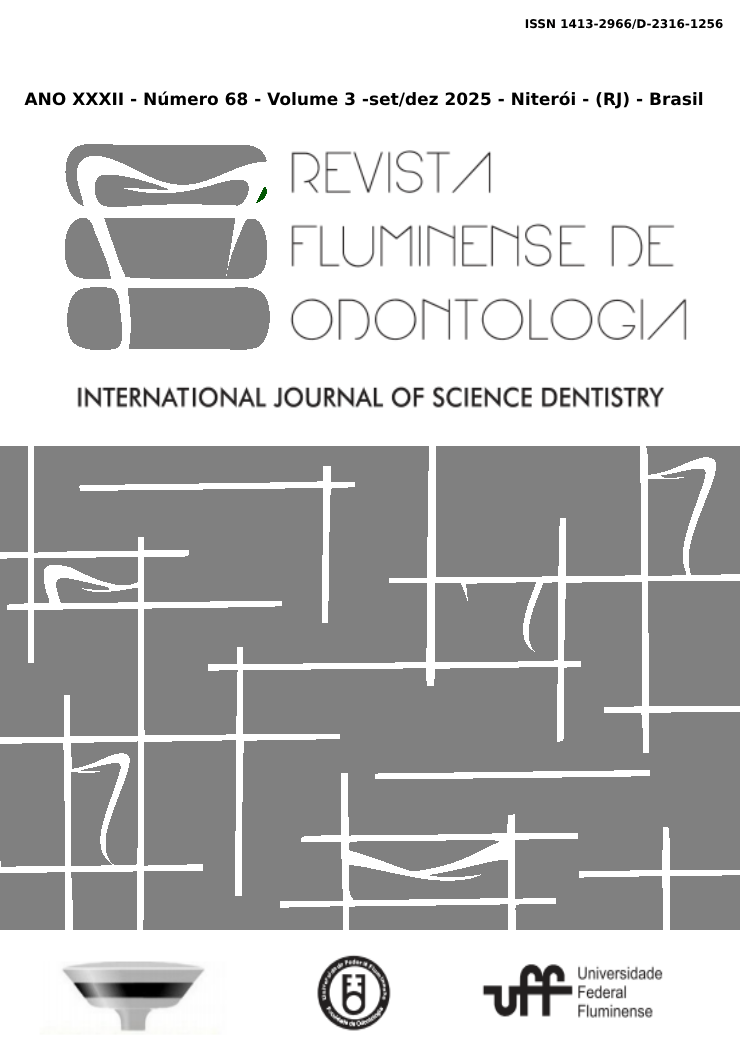IMPLANTES TRANSNASAIS E PTERIGÓIDES EM MAXILA ATRÓFICA ANTERO-POSTERIOR – RELATO DE CASO
Transnasal and pterigoid implants in antero-posterior atrophic maxilla – case report
DOI:
https://doi.org/10.22409/ijosd.v3i68.60637Abstract
The pterygoid process and the pterygomaxillary region are possible anatomical locations of choice for implant placement in cases of maxillary atrophy. Another possibility of total rehabilitation on implants are transnasal implants, which are anchorages that anchor in the basal bone of the maxilla, cross the nasal cavity tangentially to the distal wall and anchor apically in the frontal process of the maxilla. Patient, male, 50 years old, leucoderma with good general health, without any signs or symptoms of systemic disease. Total edentulous patient complained about the condition of the removable prostheses, as they presented functional impairment, masticatory inefficiency, lack of stability, affecting even their social relationships. Complementary exams were requested and with the support of a multidisciplinary team, reverse planning, making a surgical guide, installing 2 transnasal implants and 2 pterygoids in the maxilla and 4 implants in the mandible were performed. Subsequently, the prostheses were installed and the patient had no difficulty in phonetics, presented favorable aesthetics and function and good maintenance of oral hygiene. Within the limitations of this case report, it can be concluded that pterygoid implants associated with transnasal implants have a high success rate with minimal complications.
Keywords: dental implant; pterigoyd implant; transnasal implant; atrophic maxilla.





